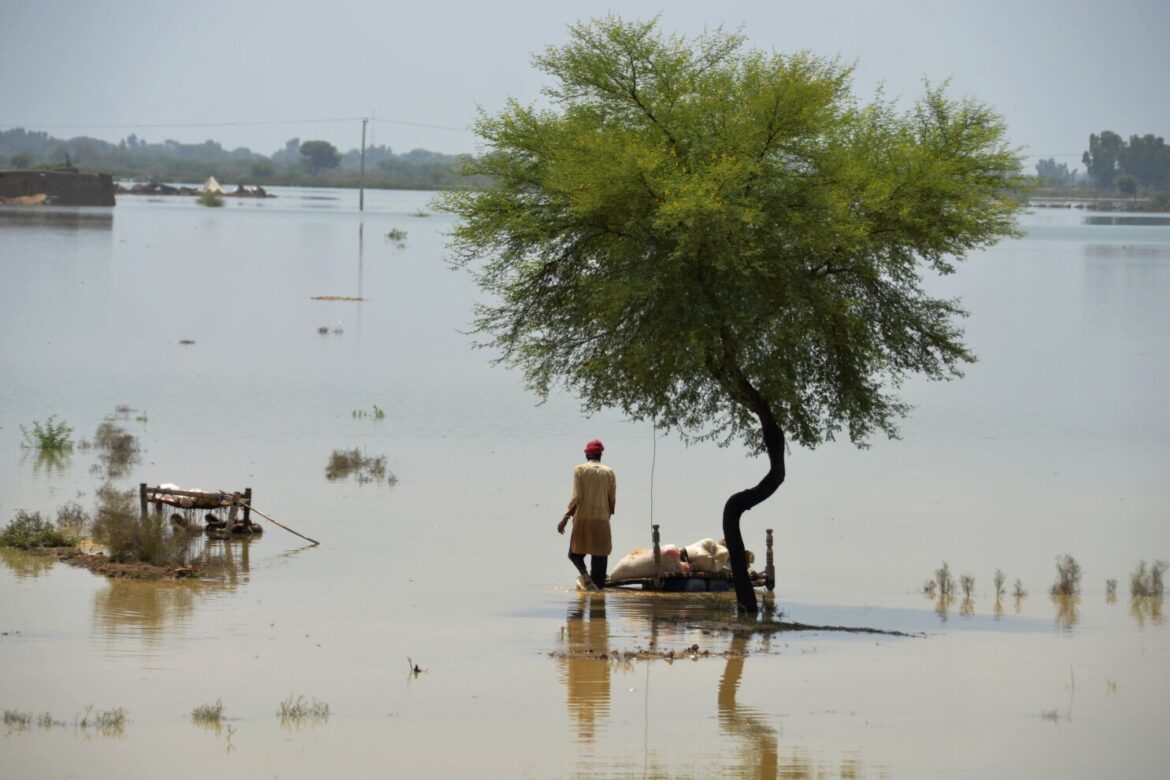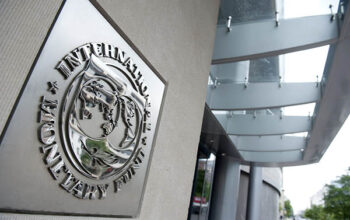“Due to severe damages to crops in Sindh, Balochistan, and KPK the agriculture sector growth is expected to decelerate by 0.7 percent (against 3.9 percent), while industrial sector growth is estimated to come down to 1.9 percent from the target of 5.9 percent and post-flood growth of services sector is expected at 3.5 percent (against 5.1 percent)”.
By Staff Reporter
ISLAMABAD: The government has sharply cut its economic forecast for the current fiscal year and signals its readiness to ease further if damage from the ongoing catastrophic floods proves more devastating.
Floods that wiped out bridges, roads, rail lines, farm fields, and standing key crops, particularly in Sindh and Baluchistan provinces will severely bite growth and fuel inflation in fiscal 2023/23, the government said in an initial assessment as concerns grow over the disaster’s impact on an already fragile economy.
Pakistan’s economy was passing through a phase of multiple challenges – including the BoP (balance of payment) crisis, heavy debt burden, and solvency-related issues. The devastations of floods have further intensified the crisis. The sectoral and overall targets set at the time of formulation of Annual Plan have become irrelevant,” the finance ministry said in it assessment report.
The government said it was assessing the damage but it would be substantial, especially in the agriculture sector which accounts for more than 22 percent of GDP and employs 45 percent of the labor force.
“Due to severe damages to crops in Sindh, Balochistan, and KPK the agriculture sector growth is expected to decelerate by 0.7 percent (against 3.9 percent), while industrial sector growth is estimated to come down to 1.9 percent from the target of 5.9 percent and post-flood growth of services sector is expected at 3.5 percent (against 5.1 percent),” it said.
“Overall GDP growth for FY23 is projected at 2.3 percent. The real GDP will decrease by Rs 1,064 billion due to recent floods. In nominal terms, this loss is equivalent to Rs2,022 billion ($9.3 billion).”
Unprecedented flash floods caused by historic monsoon rains have killed at least 1,200 people in recent weeks and affected more than 33 million, over 15 percent of the country’s 220 million population. Early estimates put the damage at more than $10 billion.
Agriculture Sector
The report said the agriculture sector is the worst hit sector, where cotton, rice, and sugarcane crops have suffered significant losses. The cotton crop of Sindh has been completely wiped out and 70 percent of the rice crop has been damaged. Expected delay in wheat sowing due to inundated lands is expected to take a toll in the form of lower output. Therefore, important crops are expected to reduce by 10.5 percent. Minor crops like chilies, tomatoes, onion, etc. have also faced the brunt of floods and are assumed to be contributing 5 percent lesser value added to GDP during FY23.
Livestock in Balochistan, Sindh, and South Punjab has been hit hard by floods and almost one million large and small animals have died. Therefore, the anticipated growth of 3.7 percent is lowered to 1.6 percent.
Industry Sector
Due to the lower availability of domestic cotton and high global prices growth in the textile sector is expected to drop. Moreover, due to lower demand automobiles and fertilizer sectors are also expected to be affected. Therefore, growth in the industry sector is expected to come down to 1.9 percent against earlier estimates of 5.9 percent.
Services Sector
Wholesale and retail trade services will be a major victim of drag on commodity-producing sectors and their growth will drop from 6.5 percent to 3 percent. Similarly, due to damages to crops and livestock along with affected road networks, transport and storage services will come down from the envisaged growth of 4.5 percent to 3 percent. Hoteling and tourism-related services and education services will also be among the sufferers. Overall, services sector growth is anticipated to drop from 5.1 percent to 3.5 percent.
Inflation
Inflationary pressures are expected to further intensify due to supply glitches and a shortage of perishable items. However, with appropriate import decisions and rehabilitation, these are expected to dissipate and average inflation for FY23 is expected to remain in the range of 25-27 percent.
External Sector
Flood damages to crops, livestock, and infrastructure, and the expected slowdown is expected to impact the external sector also. Exports of fruits and vegetables, tobacco, oil-seeds & nuts, meat, tents and canvas, leather and leather footwear, and cement are expected to reduce significantly. On the other hand, imports of raw cotton, wheat, pulses, sugar, construction machinery, and medicines will increase significantly. The overall impact of this restructuring of trade is expected to widen the trade deficit by $3 billion to $3.5 billion. The global slowdown and anticipated recession in the export markets are expected to suppress the demand for Pakistani exports, to the tune of $3 billion. In this case, the gross impact on CAD would range from $3.5 billion to $4.5 billion.
“In such a situation, Pakistan will need to provide an additional cushion to the export industry to keep it competitive and be able to meet the export targets and earn foreign exchange. This would require additional financial requirements on the local front,” the report said.
“Owing to the humongous damages spread over a vast area, it is imperative that Pakistan seeks deferments in the repayment of loans and interest payments from bilateral and multilateral partners.”
Copyright © 2021 Independent Pakistan | All rights reserved




